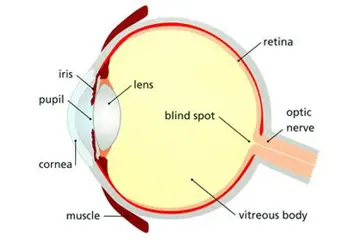What we do
- Provide a single point of contact for GPs and health professional partners to address issues that may arise.
- Listen to GPs’ views and comments to help us plan and redesign our services.
- Answer queries from GPs and practice staff about services.
- Resolve issues that need addressing promptly and effectively.
- Provide up to date information on service developments.
- Organise or support educational engagement events.
Standard checks or questions when treating eye patients
- Record best corrected visual acuity: It is good practice to check visual acuity for most patients who present with an eye condition. You should record their best corrected visual acuity – that is, their vision wearing glasses or contact lenses. Significant reduction in a patient’s visual acuity is a good indicator for referral.
- Review patient history, noting allergies, medical and ocular history.
- Always establish and record symptoms and their onset.
- Refer red eye with vision loss or other signs of concern to an ophthalmologist for evaluation.
Equipment and drugs to keep at hand in your surgery
- Vision testing chart.
- Good light source with magnifier (and, ideally, blue light source).
- Proxymetacaine 0.5% with fluorescein 0.25% drops or fluoret strips and saline drops.
- Chloramphenicol ointment 1%.
- Cotton buds.
- Eye pads.
- Tape.
- Direct ophthalmoscope.
- Patient information leaflets.
Emergency treatment for urgent, sight-threatening problems.
Primary care providers encouraged to send patients to the nearest emergency eye unit rather than sending patients directly to Moorfields Eye Hospital.
As such, please consider units in close proximity to the patient prior to referring.
Eligibility criteria for patients that are suitable for urgent Moorfields Eye Hospital A&E review:
Inclusions
Urgent, sight-threatening problems such as:
- Penetrating eye injury.
- Chemical/thermal burns to eye.
- Giant cell arteritis with loss of vision.
- Flashes and floaters of recent onset.
- Sudden loss of vision.
- Retinal detachment.
- Contact lens ulcers.
- Acute cranial nerve paresis.
- Corneal abrasions.
- Corneal foreign bodies.
- Symptoms of acute angle closure glaucoma.
- Optometry referrals for pressures >30mmHg.
Exclusions
- Non-urgent problems (dry eyes, itchy eyes, hay fever, cataracts).
Moorfields carries out active triage – if a condition is not urgent, patient may be triaged away from A&E.
Moorfields A&E prefers GPs to call prior to sending patients.
020 7521 4682 (direct dial to the A&E named A&E clinician of the day).
Anatomy of the human eye
Schematic diagram of the human eye
Cross section of the human eye


Accessible information standard (AIS)
The AIS ensures that patients, carers and parents of patients, and visitors who have a disability or sensory loss receive information they can access and understand. We strive to ensure that information is given in the appropriate format and all patient information is produced according to the accessible standards set by the UK Association for Accessible Formats.
An Accessible Information Standard patient panel works alongside our AIS project group to offer advice and ideas from a patient and carer perspective. Visit our accessibility page to learn more.
UK Ophthalmology Alliance
Formed in 2017, the UK Ophthalmology Alliance brings together eye care professionals, patient groups and national ophthalmic bodies across the UK to improve efficiency and pathways, create quality standards, benchmark performance and provide support in areas where performance can be improved. The alliance also provides a national voice on eye care issues, especially around efficiency and the use of resources.
Currently the alliance involves a large number of secondary care ophthalmic units and stakeholders such as the Royal College of Ophthalmologistst, the College of Optometrists, BIOS, Getting it Right First Time and patient charity groups. It is hoped that as the alliance develops, all eye units will be invited to join. The alliance is funded by the NHS England Vanguard Programme and is based on a model created by the National Orthopaedic Alliance.
For more information please contact us at uk.oa@nhs.net
Primary Care Provider Liaison team